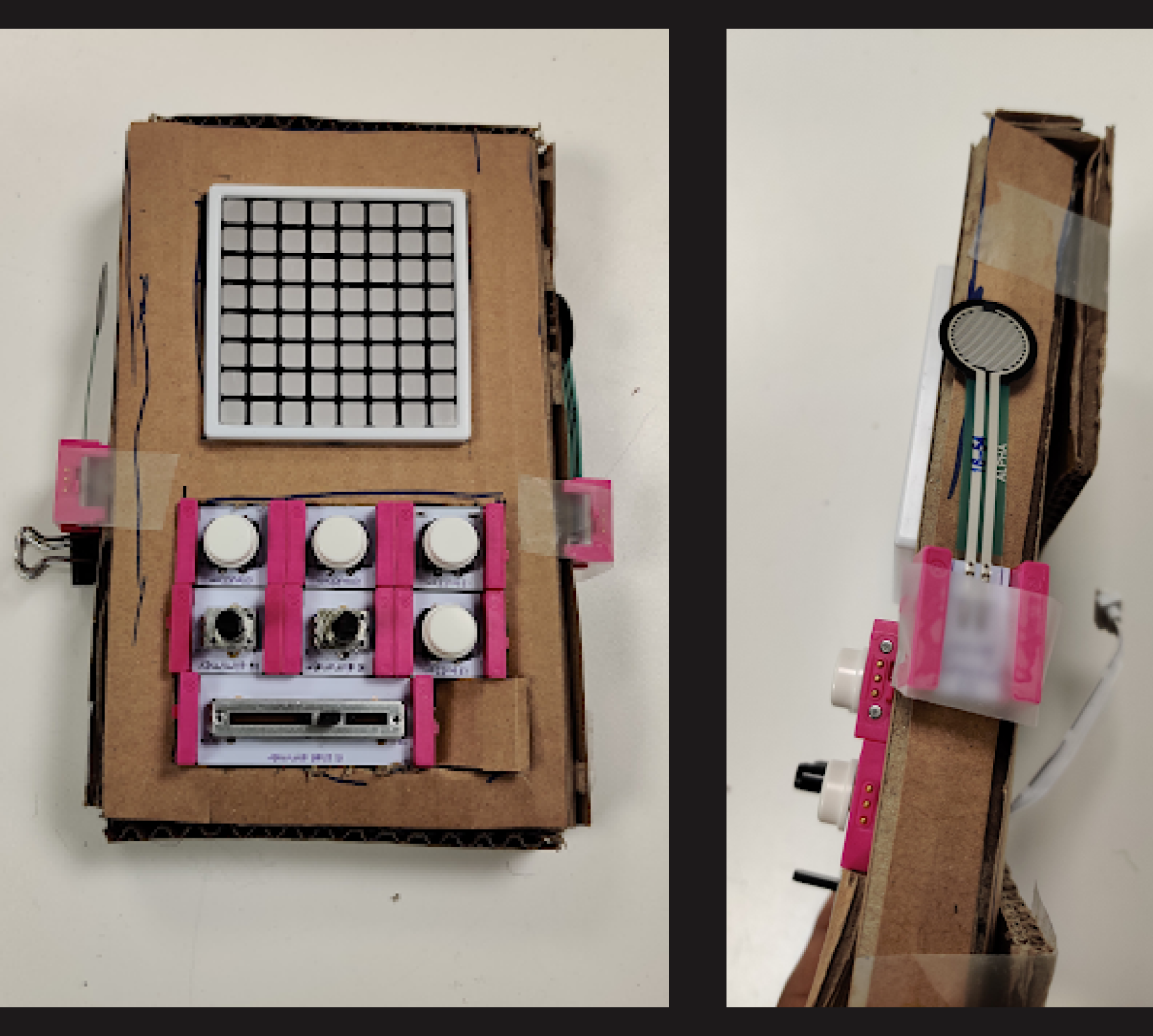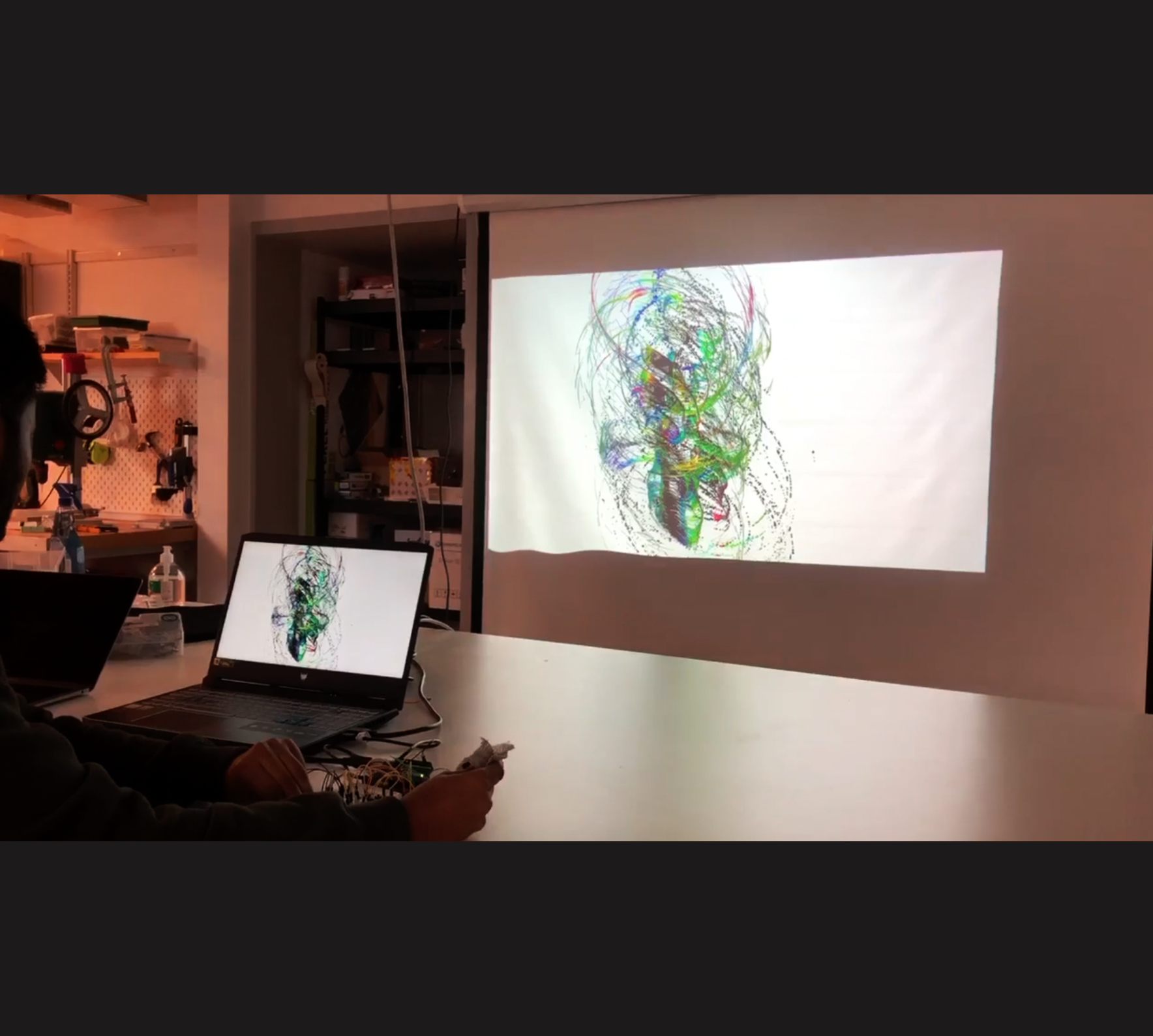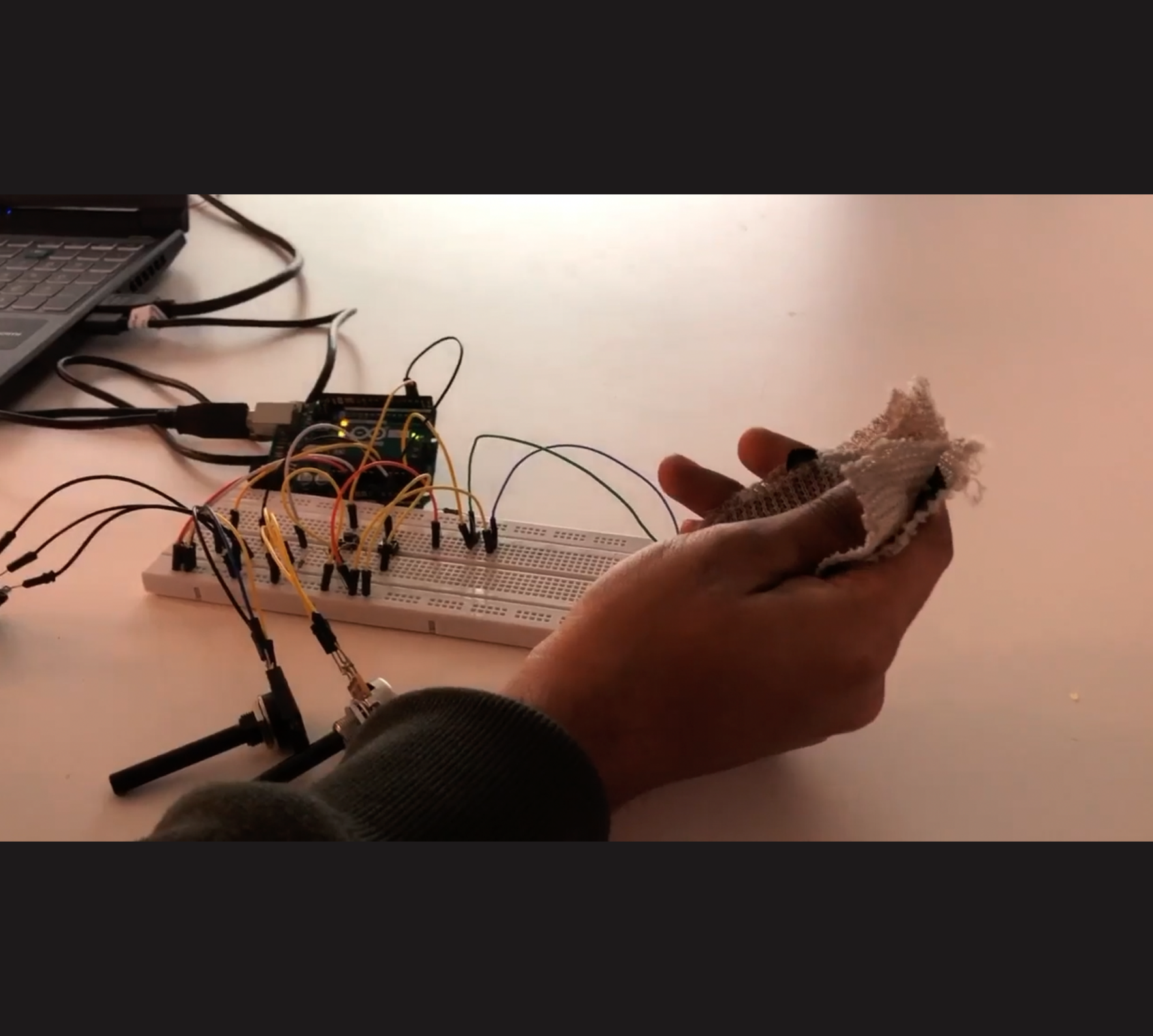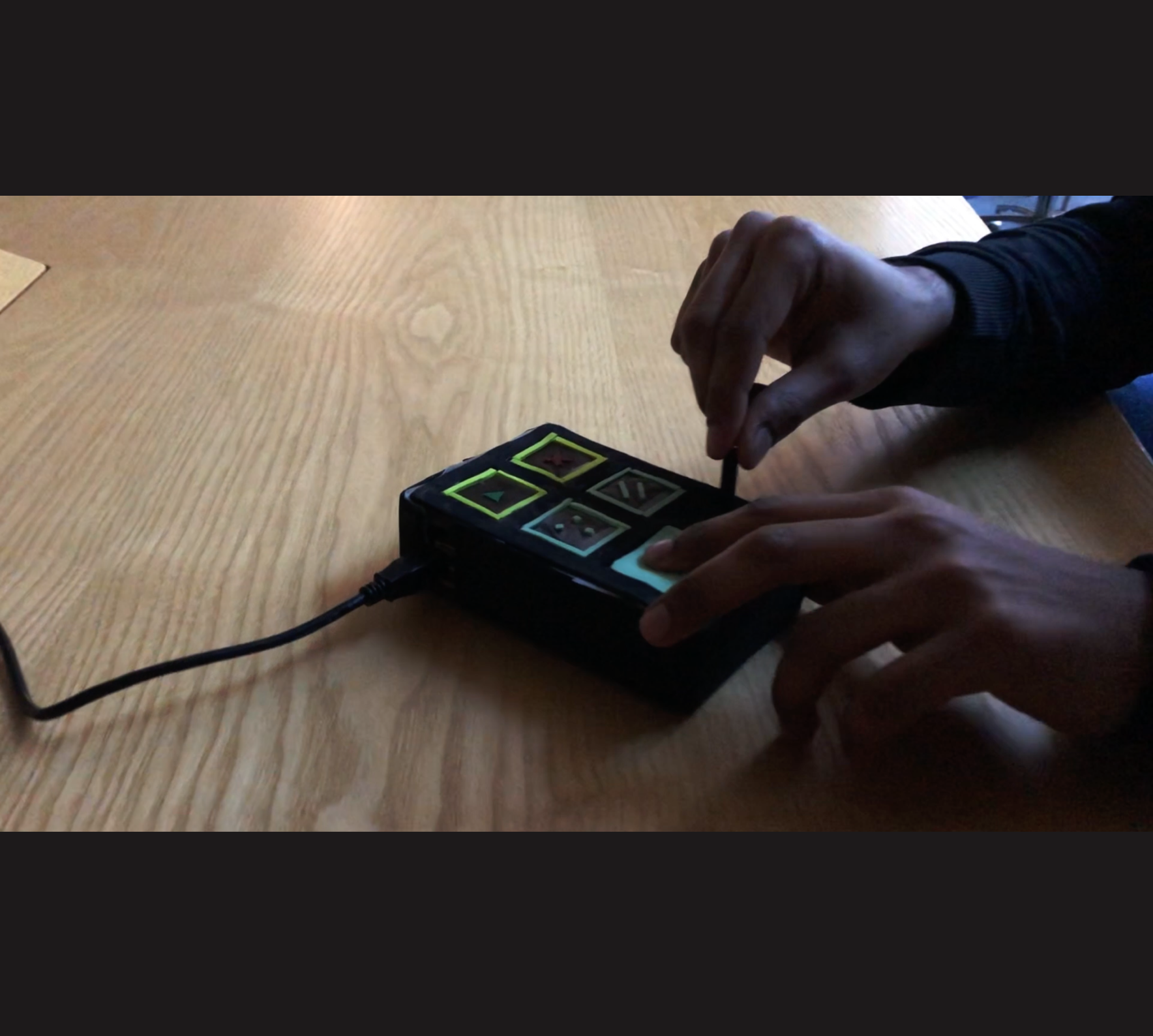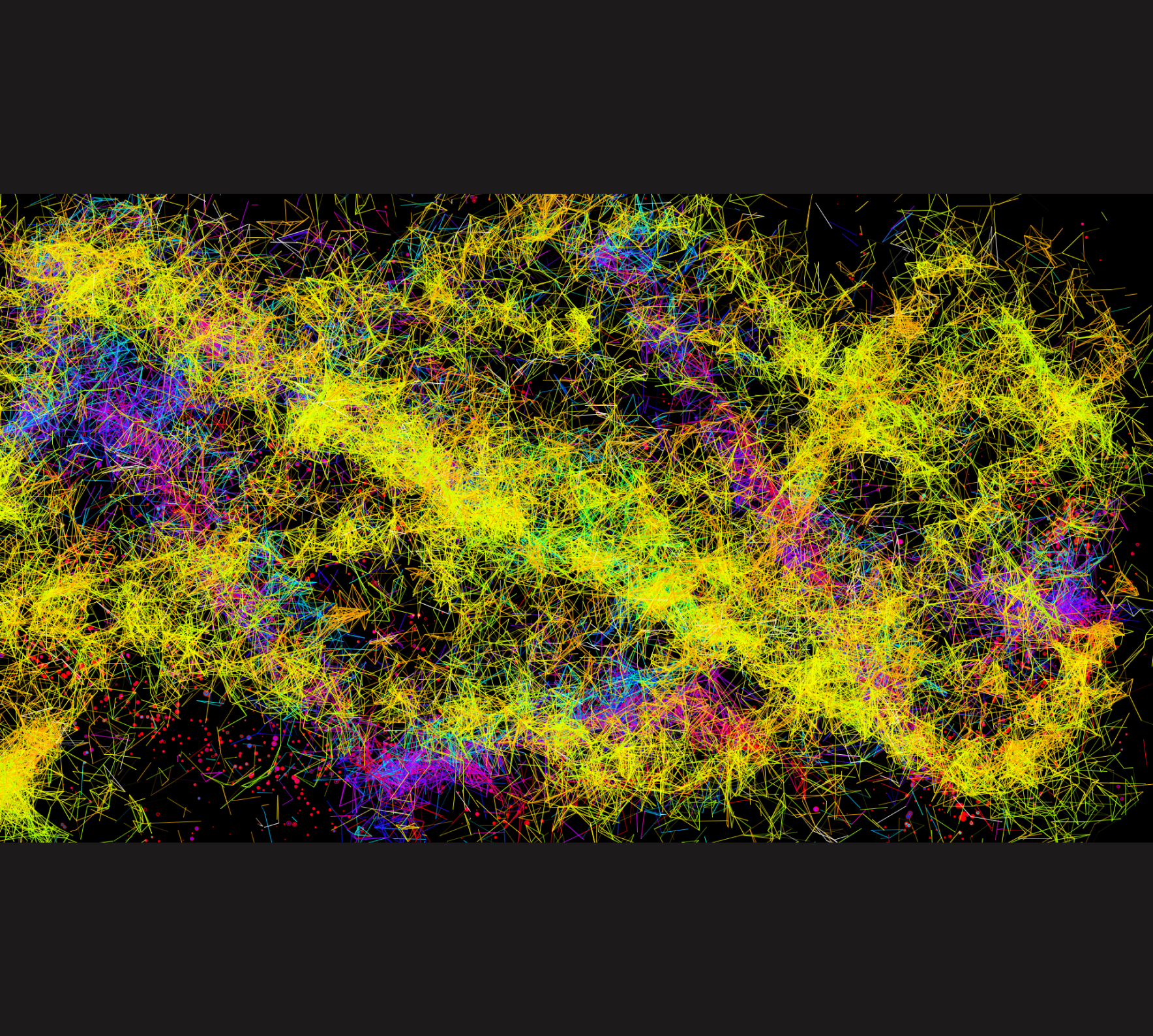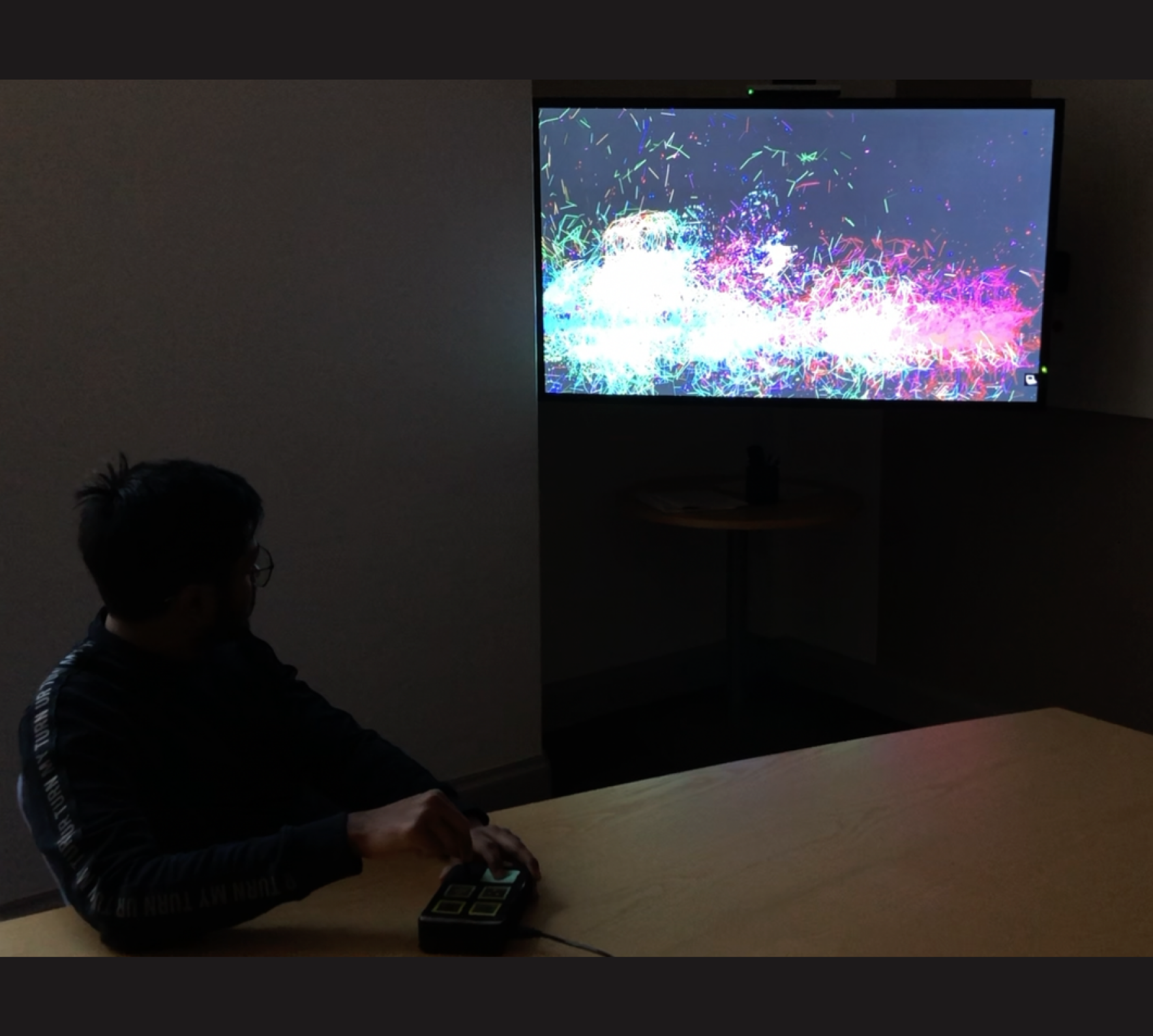
During this project, made with KTH Royal Institute of Technology, our goal was to understand how to link artistic expression and fidgeting.
In order to do this, we tried to create a visual generative art experience linking digital art with a physical object users could interact with.

During the past year, I've been exploring the world of generative art using processing among other tools. This led me to think of the possibility to create a physical device that generates art while fidgeting with it. This resonated well within the group and we decided to pursue the idea.
Thus, the goal was to design a device that brings a creative, fidgeting experience to the user.

Figuring out how to create a device that provides novel forms of interactions and still are pleasurable to use was challenging.
We dove into research related to interactive art to find out how the interactions and the art would relate to each other while also sketching out multiple formats of the device.
We built a physical prototype using cardboard and loose buttons to get a feeling for the possible interactions and for the form of the device.
An interactive prototype was made using the electronic components and the software we would use in the final device.
This made room for a more real experience in terms of the interactions and made it possible to perform some initial user testing.
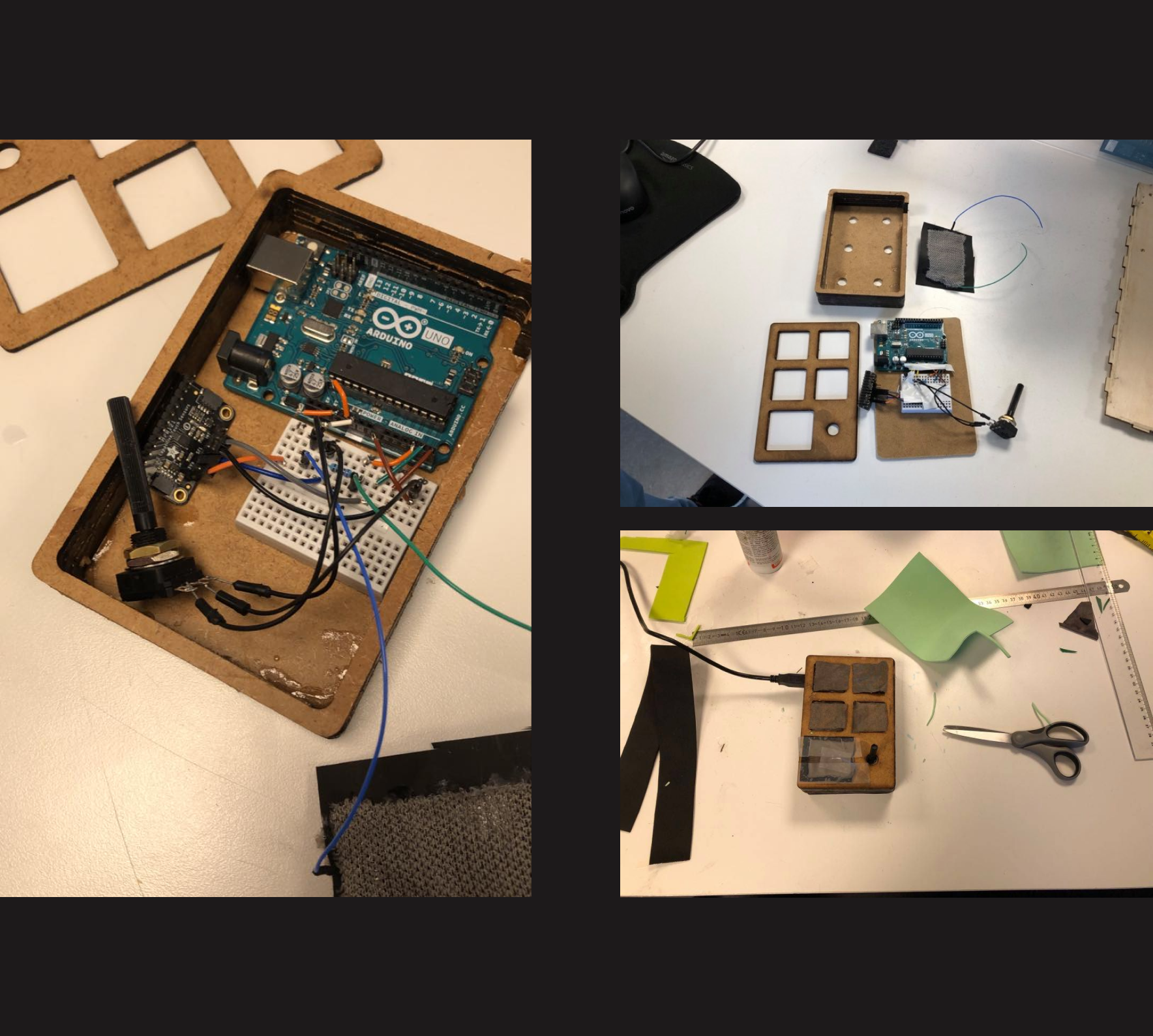
The design of this device consisted of two main areas, software and hardware.
The software needed to generate art on a screen was realized using processing that used an algorithm I developed to generate different forms of art based on the user interaction.
The hardware part was built using an arduino communicating to processing and a case built out of wood.
For the final device we used soft materials such as foam and fabric to make the device nice to touch and comfortable to fidget with.
We made touch sensors with fabric and a pressure sensor with foam to let the user interact with different materials.
Some examples of art generated from the device is shown here.
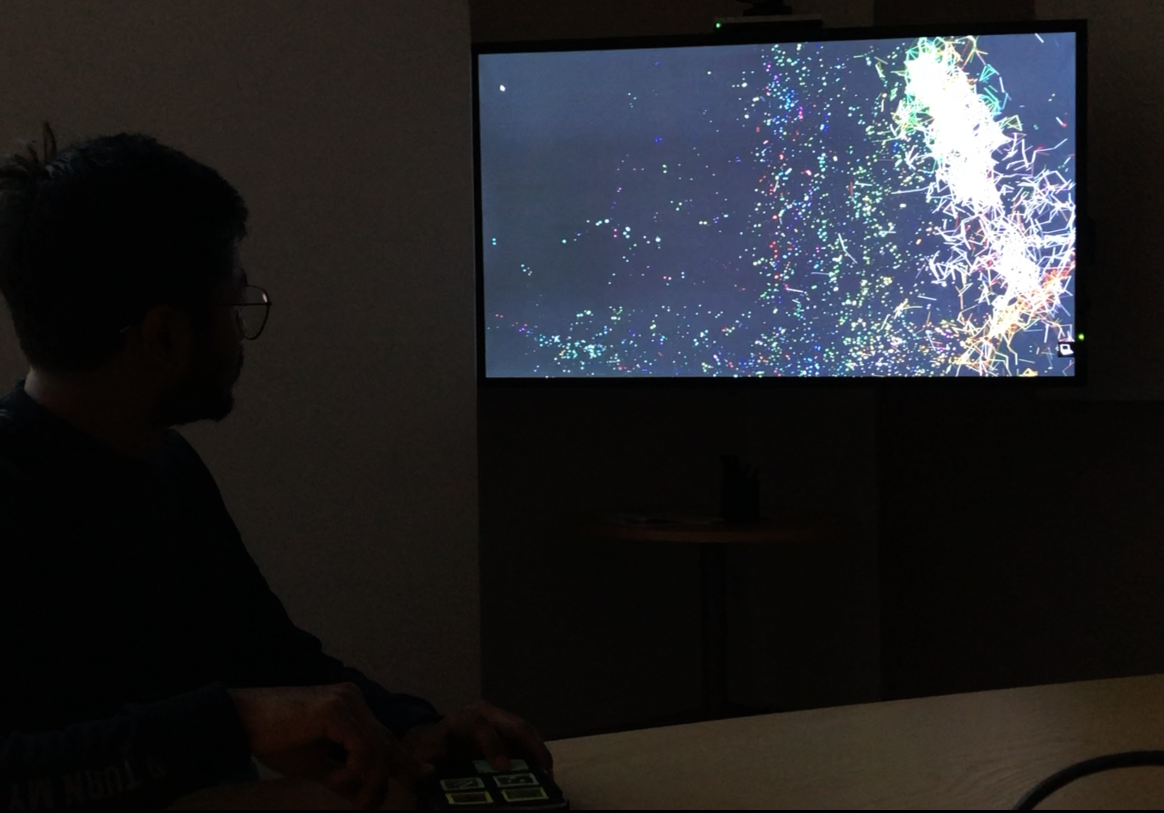
The final design made it possible to generate art by fidgeting with the device. Thus making it possible for users to create generative art without writing a single line of code. This could make the creation of generative art available to a new set of people who lack the technical knowledge to create generative art from scratch.

